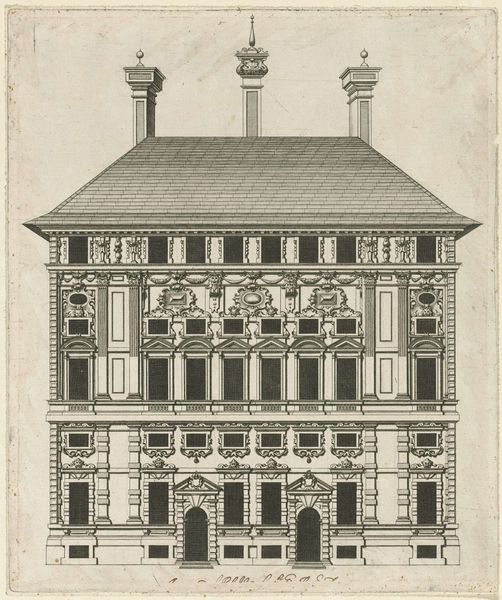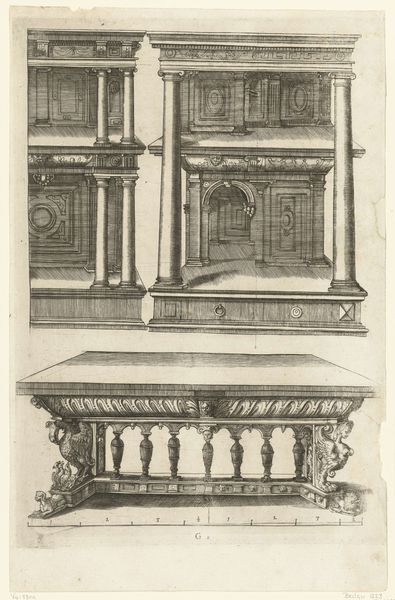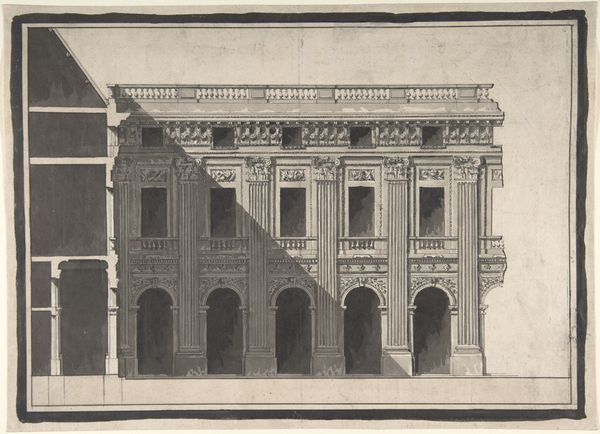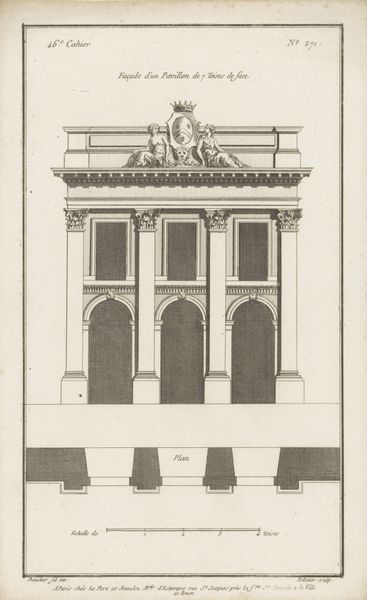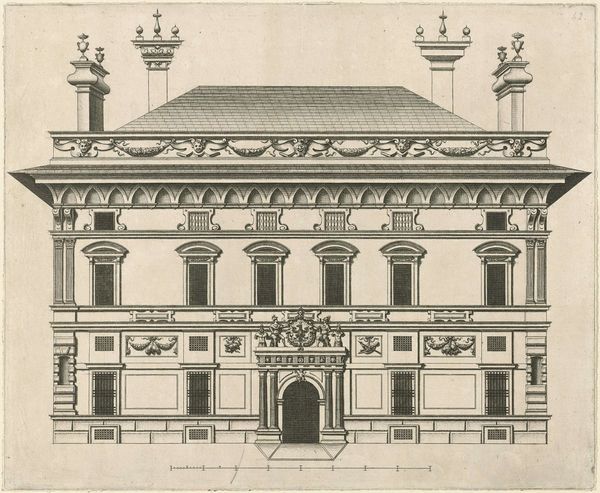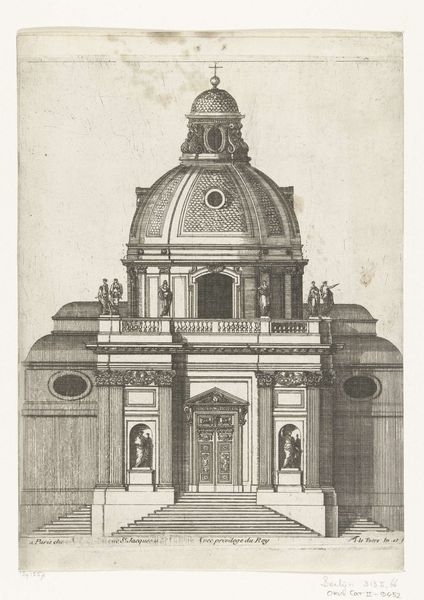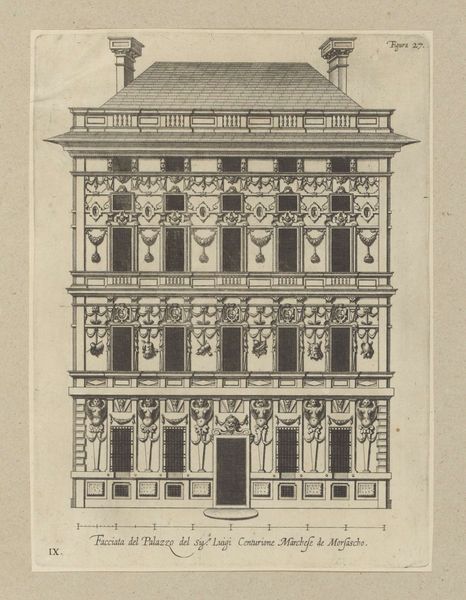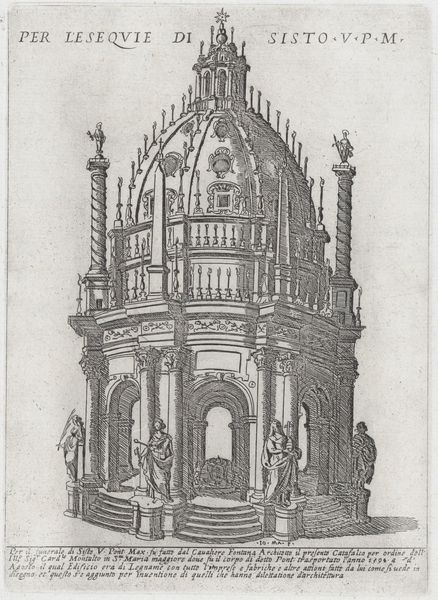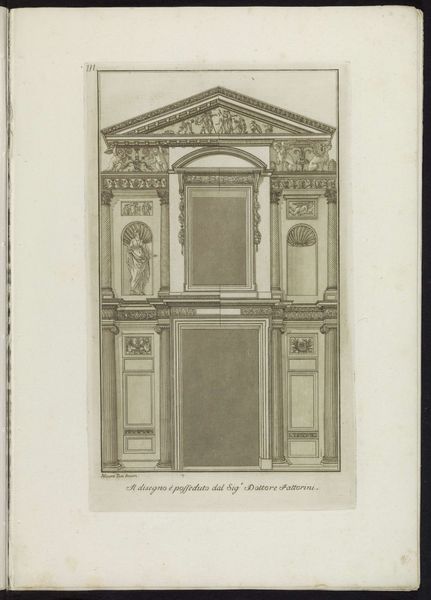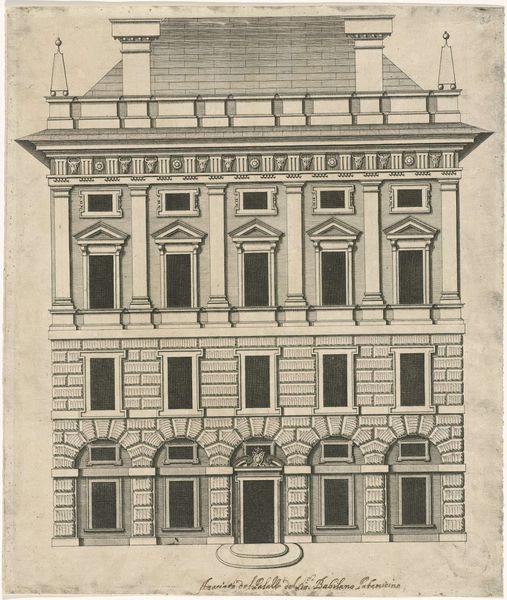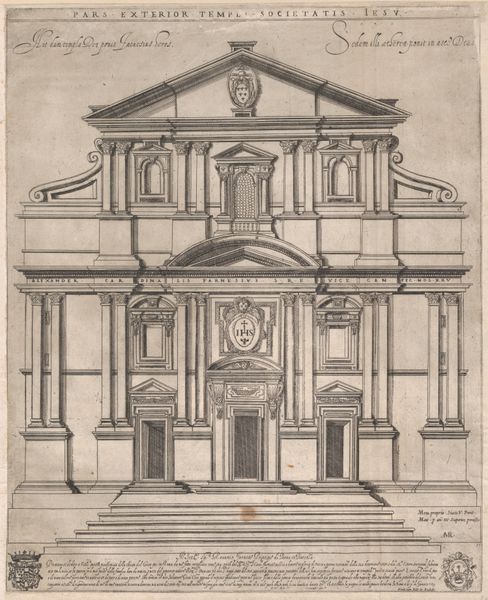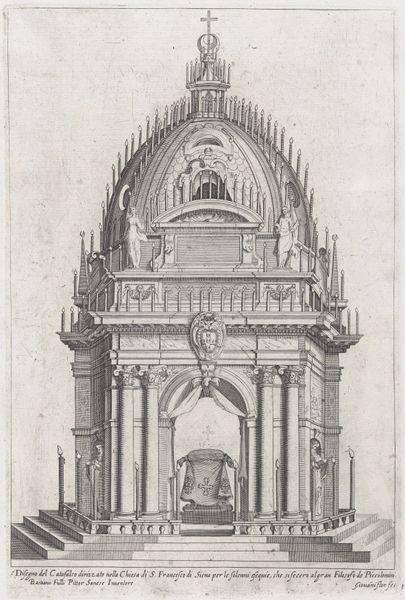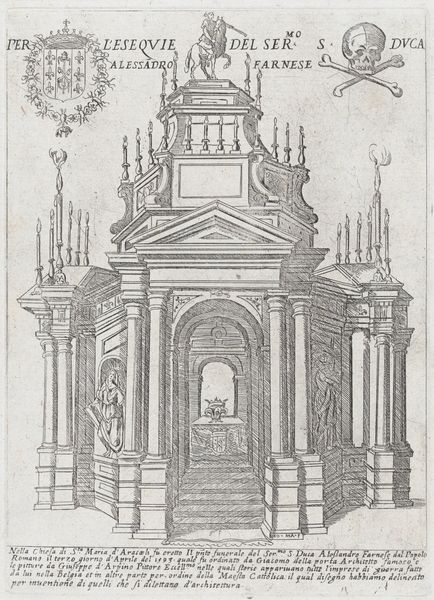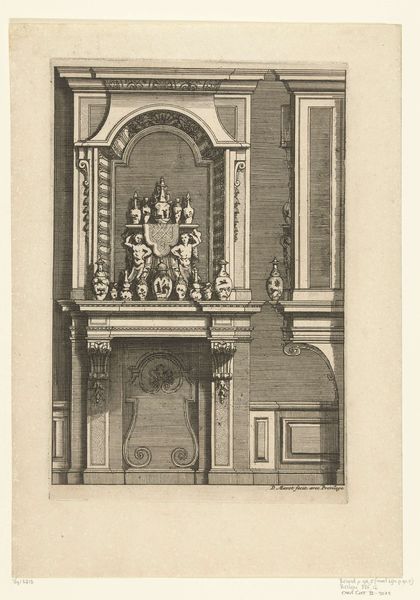
drawing, print, ink, engraving, architecture
#
drawing
#
baroque
# print
#
form
#
ink
#
line
#
cityscape
#
engraving
#
architecture
#
realism
Dimensions: height 342 mm, width 220 mm
Copyright: Rijks Museum: Open Domain
Nicolaes Ryckmans made this rendering of the Palazzo Campanella using etching, a printmaking technique. Here, a metal plate, likely copper, is coated with a waxy, acid-resistant substance called a ground. The artist then scratches an image into the ground, exposing the metal. When the plate is dipped in acid, the exposed lines are eaten away, creating grooves. Ink is applied to the plate, filling these lines, and the surface is wiped clean. Finally, paper is pressed against the plate, transferring the ink and creating the print. Consider the labor involved in this process. The preparation of the plate, the careful etching, and the printing itself all require skill and time. The crisp, precise lines of the architecture speak to the engraver's expertise. But the Palazzo Campanella also speaks of architectural ambition, referencing classical design and social status. Paying attention to the materials and processes of making helps us understand the significance of this image, and the traditions of both printmaking and architecture.
Comments
No comments
Be the first to comment and join the conversation on the ultimate creative platform.
